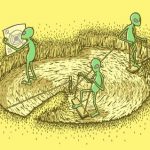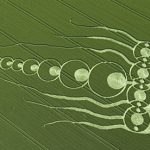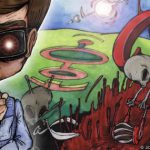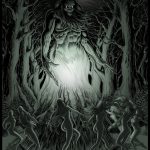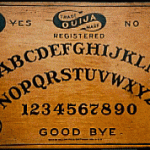In 1991 two retired lanscape painters Englishmen, Doug Bower and Dave Chorley, proclaimed they were responsible for all the crop circles in England since 1978, starting as a joke to make people think UFOs were landing. They demonstrated their technique for the cameras with a 1.2-metre board attached to a rope they hung around their necks. One held one end of a string in the centre to determine the radius while the other held the other end and stomped down the plants with the board. Newspapers and TV stations around the world trumpeted the solution to the crop circle mystery.
Since Doug and Dave’s “retirement” in 1991, another generation of hoaxers has appeared. The only group to go public calls itself the Circlemakers (http://www.circlemakers.com) includes situationist artists Rod Dickinson and John Lundberg, the sculptor Gavin Turk, Rob Irving and others. They have not taken credit for any one formation in particular, except a few commercial exhibitions (Mitsubishi, Weetabix) and a couple of television programs (History Channel, …), saying that revealing which circles they’ve created would ruin the mystery and appreciation for what they call their “land art.”
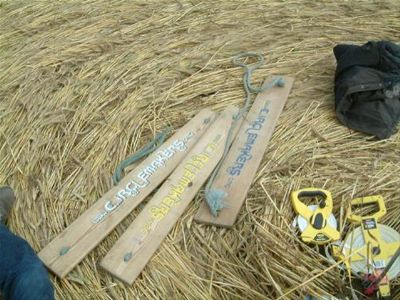
Eventually the group was approached by companies who wanted circles made for them, either for television and movies spots or for publicity stunts and advertising. Over the years, the group has crafted circles for companies such as Red Bull, Shredded Wheat, and NBC-TV. John Lundberg leader of the Circlemakers, considers their practice an art. Lundberg estimates that there are three or four dedicated crop circle art groups operating in the United Kingdom today, and numerous other small groups that make one or two circles a year more or less as a lark.
To combat a widely promulgated theory that the circles were the result of wind vortices, essentially mini-whirlwinds, crop artists felt compelled to produce ever more elaborate designs, some with straight lines to show that the circles were not a natural phenomenon, said Lundberg. The other impetus is true of all art forms: Artists influence one another, and designs evolve in response to what has been done before.
The circlemakers operate out of England, but their work can be found in a wide variety of locations across Europe and the United States. For instance, a 2006 campaign, which was sponsored by Microsoft to promote the release of the Xbox 360, resulted in three identical crop circles across the United States. Two were printed into beaches on the California and Florida coastlines, while the third was mowed into a grassy field in Oklahoma.
The circlemakers maintain a website to showcase their escapades and provide information about their activities. The website boasts details about the group’s history, as well as photographs of their works and a beginner’s guide to becoming a circlemaker.

